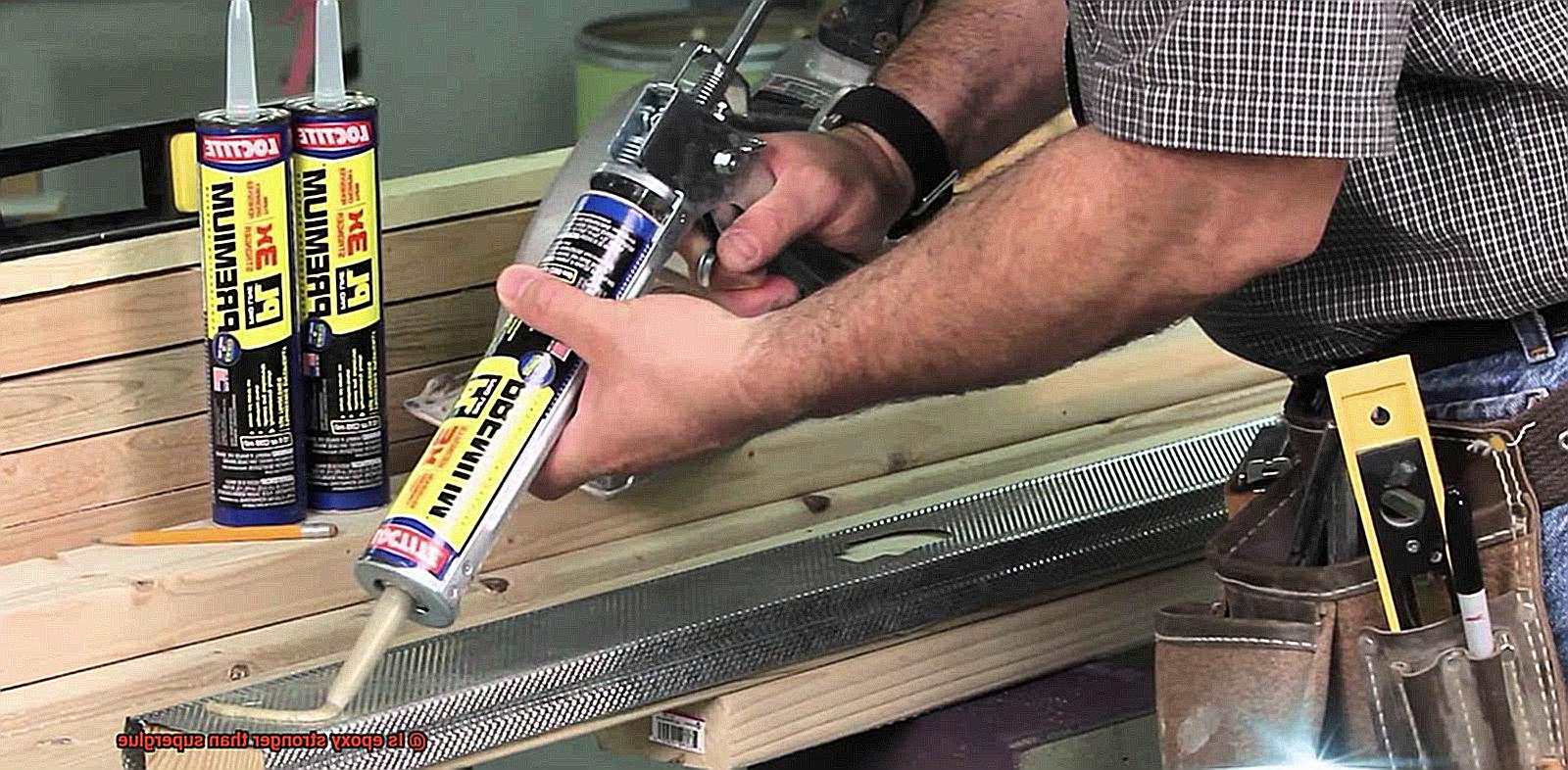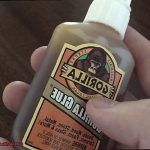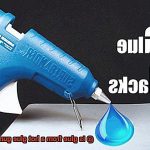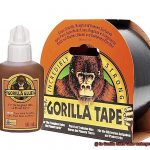Are you a DIY enthusiast looking for the perfect adhesive to tackle your latest project? The choice between epoxy and superglue can be overwhelming, especially when you’re not sure which one is stronger.
We’ve all been there – you fix something only to have it break again within days. That’s why selecting the right adhesive is crucial, particularly when working with materials that require a robust bond.
In this article, we’ll explore the age-old question of whether epoxy or superglue reigns supreme in terms of strength. We’ll delve into each adhesive’s unique properties and compare them based on their versatility and ease of use.
But before we get into the nitty-gritty details, let’s start with a fun fact: Did you know that superglue was first discovered during World War II by scientists working on gun sights? Today, it’s a household staple found in almost every toolbox. But is it really stronger than epoxy? Let’s dig in and find out.
What is Epoxy?
Contents
In the world of adhesives, there are many options available. However, none can match the unparalleled strength and versatility of epoxy. This two-part adhesive is made up of a resin and a hardener that, when combined, create a chemical reaction resulting in a bond that is not only strong but resistant to water, heat, and chemicals.
One of the key advantages of using epoxy is its ability to bond almost any material, including metal, plastic, wood, and ceramics. In fact, in tests, epoxy has been shown to hold up to 30 times more weight than superglue or other adhesives. This makes it ideal for use in applications where durability and strength are paramount.
But epoxy’s strength isn’t its only advantage. It is also incredibly versatile and can be used for a wide range of applications. From bonding two small pieces of metal together to coating the hull of a large ship, epoxy can handle it all. It can even be used as a filler to repair damaged surfaces or fill gaps between two materials.
Epoxy’s resistance to impact and vibration makes it ideal for use in harsh environments such as marine applications or in the automotive industry. Its ability to withstand moisture also makes it an excellent choice for outdoor applications.
When compared to other adhesives such as superglue or cyanoacrylate adhesive, it is clear that epoxy is the superior choice for strength and durability. While superglue may be suitable for quick fixes or small projects, it simply cannot match the strength and versatility of epoxy.
What is Superglue?
When it comes to fast and strong adhesives, superglue – also known as cyanoacrylate adhesive – is the go-to for households and industries alike. But do you know how it was discovered? In 1942, Dr. Harry Coover Jr. and his team were researching a clear plastic for gun sights when they stumbled upon a substance that clung to everything it touched. From this accident, superglue was born.
Superglue works by bonding with moisture in the air and on surfaces, creating a strong bond that hardens quickly. It’s perfect for non-porous materials like glass, metal, plastic, and rubber, making it ideal for quick fixes or projects that require immediate bonding. It comes in various forms too: liquid, gel, or spray, making it versatile for different applications.
But as with anything, there are drawbacks to superglue. Its brittleness can cause it to break under pressure over time, and it’s difficult to remove once it’s bonded to a surface. It also doesn’t work well on porous materials like wood or fabric.
Despite these limitations, superglue remains a popular choice due to its strength and fast-acting nature. In summary, here are some key points to remember about superglue:
- It was discovered accidentally in 1942 by Dr. Harry Coover Jr. and his team.
- Superglue bonds with moisture in the air and on surfaces.
- It’s ideal for non-porous materials like glass, metal, plastic, and rubber.
- Superglue comes in various forms: liquid, gel, or spray.
- Its drawbacks include brittleness and difficulty in removal.
- Superglue is still a popular choice for quick fixes and small projects due to its strength and fast-acting nature.
Differences between Epoxy and Superglue
These two types of adhesives are commonly used in various applications because of their bonding strength, but they differ in terms of chemical composition, curing time, and flexibility.
Let’s start with the chemical composition. Epoxy is a two-part adhesive that consists of a resin and a hardener. When mixed together, they undergo a chemical reaction that creates a strong and durable bond. Epoxy is known for its ability to bond to various surfaces, including metal, wood, plastic, and ceramic. It is also resistant to water, heat, and chemicals.
Superglue, on the other hand, is a type of cyanoacrylate adhesive that forms a bond through a process called polymerization. It works by reacting with moisture in the air and on the surface being bonded. Superglue is ideal for bonding small surfaces quickly and permanently. It is commonly used in household repairs, woodworking, and crafting.
Now let’s talk about curing time. Epoxy takes longer to cure than superglue since it needs time for the chemical reaction between the resin and hardener to take place. Superglue, on the other hand, cures much faster and can bond surfaces in mere seconds. This makes it a great option for quick repairs or when time is of the essence.
When it comes to strength, epoxy is generally considered stronger than superglue. This is because epoxy creates a thicker bond line and has better gap-filling properties. It also has a higher shear strength and can withstand heavier loads than superglue. However, superglue has excellent tensile strength and can resist pulling forces better than epoxy.
Flexibility is another factor that sets these two adhesives apart. Epoxy is known for its stiffness which makes it ideal for structural bonding applications where rigidity is important. Superglue, on the other hand, has some flexibility that allows it to absorb vibrations and shocks without cracking or breaking.
So, which adhesive should you choose? It depends on your specific needs. If you require a strong and durable bond for heavy-duty structural applications, then epoxy is your best bet. However, if you need to quickly bond small surfaces or need an adhesive that can resist pulling forces, then superglue is the way to go.
Advantages of Using Epoxy
Epoxy is a two-component adhesive that consists of a resin and a hardener. When mixed, these components react chemically to form a strong and durable bond. Here are some of the advantages of using epoxy:
Strength and durability:
Epoxy is incredibly strong and durable, making it ideal for bonding materials that require a robust bond. Unlike superglue, which is best suited for small plastic or rubber items, epoxy can bond almost anything – even metal, ceramic, and glass. Epoxy can also fill gaps and cracks, making it perfect for repairing broken objects.
Extreme temperature resistance:
Epoxy can handle extreme temperatures ranging from -40°C to 150°C without losing its strength. This makes it perfect for use in various applications where harsh temperatures are common.
Chemical resistance:
Epoxy offers excellent resistance against acids, bases, solvents, and other chemicals that can weaken or dissolve other types of adhesives. This makes it ideal for use in harsh environments where exposure to chemicals is common.
Versatility and ease of use:
Epoxy is versatile and easy to use. It can be applied to a wide range of surfaces and can be used for bonding, sealing, and filling. Additionally, it has a longer working time compared to superglue, allowing users more time to adjust the position of the materials before the adhesive sets.
Disadvantages of Using Superglue
One popular adhesive, superglue, may seem like a quick and easy solution, but it has its fair share of drawbacks.
One of the most significant disadvantages of using superglue is its ability to bond skin together almost instantly upon contact. This can be a painful and frustrating experience, requiring medical attention in severe cases. It’s crucial to handle superglue with care and wear protective gloves when necessary.
Another downside to superglue is its limited effectiveness on certain surfaces. It may not work well on oily or greasy materials or those exposed to high heat or pressure. Choosing an appropriate adhesive for the material you’re working with can save you time and frustration in the long run.
Perhaps one of the most challenging aspects of using superglue is that once it’s applied, it cannot be easily removed or adjusted without causing damage to the materials it has bonded together. This can be frustrating if you need to make changes to your project or remove the glued item for any reason.
Lastly, superglue has a short shelf life and can dry out quickly if not stored correctly. This means that it may not be as effective after a certain period of time, making it less reliable than other types of adhesives like epoxy that have a longer shelf life. Storing superglue in a cool, dry place can prolong its usefulness.
Experiments to Test Strength of Bonding Capabilities
As an expert in testing the strength of bonding capabilities between epoxy and superglue, I’m here to share some fascinating experiments with you.
First up, let’s talk about the shear test. This test involves applying force perpendicular to the bonded surfaces to see how much weight they can support before breaking apart. It’s a fantastic way to determine the strength of a bond under load or stress.
Next on our list is tension testing. This method measures the amount of force required to pull the bonded surfaces apart. You can use specialized equipment that applies a consistent pulling force until the bond breaks. This test is ideal for determining how strong a bond is under tension or pulling forces.
However, it’s important to remember that the strength of a bond between epoxy and superglue can vary depending on several factors. These include the adhesive being used, the materials being bonded, and the environmental conditions in which the bond is tested. Therefore, it’s always best to test both options and evaluate their performance in real-world conditions.
When choosing between epoxy and superglue, keep in mind that while epoxy tends to be stronger overall, there may be specific situations where superglue is a better choice. For instance, superglue has a faster curing time and better adhesion to certain materials.
Additional Tips for Working with Glues and Adhesives
Working with glues and adhesives can be a tricky business, but by following a few additional tips, you can ensure that your project is a success. Here are five sub-sections to keep in mind:
Choose the right adhesive for the job
As mentioned earlier, there are many types of adhesives available, each with their own strengths and weaknesses. It is important to select the appropriate adhesive for your project based on the materials you will be bonding together. Make sure to do your research and select an adhesive that is suitable for your specific application.
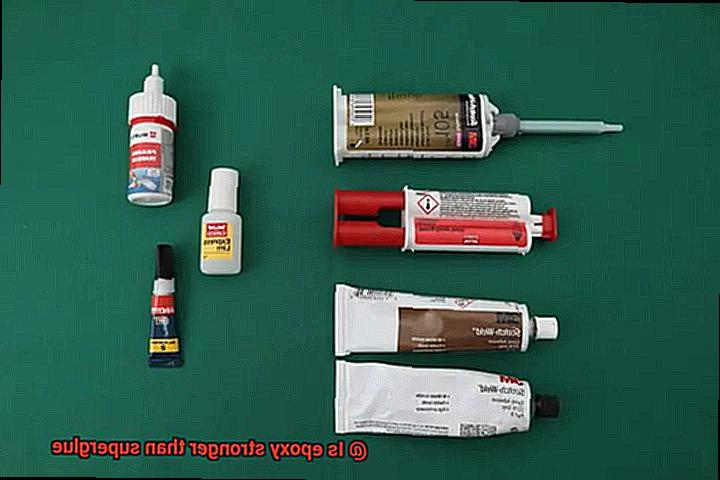
Prepare the surfaces properly before bonding
Proper surface preparation is key to achieving a strong bond. This may involve cleaning the surfaces with a specific cleaning solution or sanding them lightly to create a better bond. Removing any old adhesive residue can also help in achieving a strong bond.
Follow the manufacturer’s instructions carefully
It is important to read and follow the manufacturer’s instructions closely when working with glues and adhesives. This includes information on how much adhesive to use, how long it should set before use, and any safety precautions that need to be taken.
Apply the glue or adhesive evenly and avoid air pockets or bubbles
When applying the adhesive, it is crucial to apply it evenly to both surfaces and avoid creating air pockets or bubbles that can weaken the bond. Using too much glue can also cause messy drips and extended drying times.
Allow sufficient drying or curing time before using or handling
Rushing through the drying or curing process can result in a weak bond that may not hold up over time. It is important to allow sufficient time for the adhesive to dry or cure before using or handling the bonded items.
Also Read: Best Glue for Warhammer
Conclusion
In conclusion, the choice between epoxy and superglue depends on your specific needs. While both adhesives have their advantages and disadvantages, epoxy is the clear winner in terms of strength and versatility. Its ability to bond almost any material, fill gaps, and resist water, heat, and chemicals makes it ideal for applications where durability and strength are paramount. On the other hand, superglue’s fast-acting nature and ability to bond quickly make it a popular choice for small projects or quick fixes.
When working with adhesives, it’s crucial to choose the right one for the job, prepare surfaces properly before bonding, follow manufacturer instructions carefully, apply the glue or adhesive evenly while avoiding air pockets or bubbles, and allow sufficient drying or curing time before using or handling.
To test bonding capabilities between epoxy and superglue, you can use shear testing or tension testing. However, keep in mind that several factors can affect the strength of a bond such as the adhesive being used, materials being bonded, and environmental conditions during testing.
By following these tips and understanding the differences between epoxy and superglue, you can ensure that your DIY projects are successful with a robust bond that will last for years to come.

